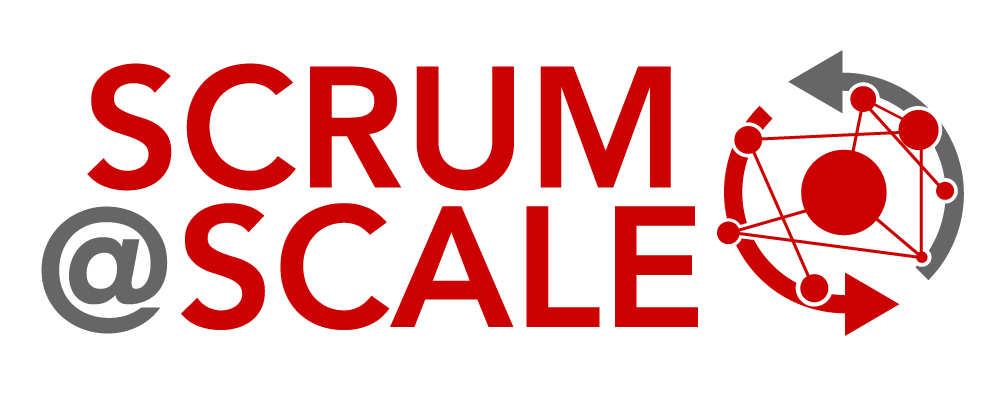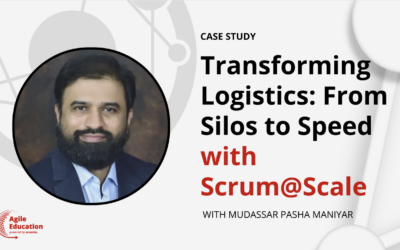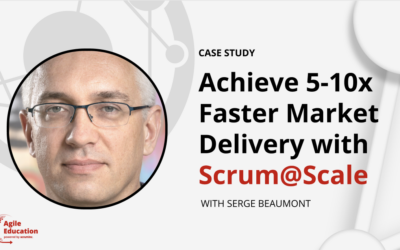Caso práctico Agile Education
Un enfoque basado en datos para ampliar Scrum globalmente en Sanofi
¿Cómo alineas a más de 50 equipos globales para ofrecer resultados más rápidos, más inteligentes y a escala?
El Centro de Excelencia de ARNm de Sanofi recurrió a un marco de madurez ágil basado en datos para sustituir el progreso subjetivo por claridad, velocidad e impacto medible. Explora cómo las prácticas estructuradas de Scrum impulsaron la innovación en vacunas en una cartera $7B.
RESUMEN DEL ESTUDIO DE CASO
Trainer Nombre: Robert Schrader
Industria: Sanidad
Tamaño de la organización: Grande
Tema: Escalar Scrum globalmente
La fecha: 2025
LinkedIn: https://www.linkedin.com/in/robert-schrader-b1b5a53/
Resumen del estudio de caso
Descubre cómo el Centro de Excelencia de ARNm (CoE de ARNm) de Sanofi, dentro de la Unidad de Negocio de I+D de Vacunas, aprovechó las evaluaciones de madurez Agile basadas en datos para acelerar la transformación de más de 50 equipos de plataforma en centros globales de Estados Unidos, Francia y Australia. Mediante un enfoque sistemático que utiliza el marco Scrum, el CoE de ARNm pretende alejarse del progreso disperso y las evaluaciones subjetivas para lograr una entrega más rápida de vacunas candidatas críticas, con claridad, precisión y alineación organizativa en una cartera de vacunas $7B en crecimiento.
El Centro de Excelencia de ARNm (CoE de ARNm) de Sanofi, con más de 500 miembros de equipo en todo el mundo y un aumento de 20% en nuevas contrataciones en menos de un año, necesitaba una forma escalable de gestionar su transformación Agile dentro de su Centro de Excelencia de ARNm. A pesar de la amplia adopción, los esfuerzos de transformación carecían de coherencia, visibilidad y perspectivas procesables. Con más de 50 equipos en juego, a los líderes les resultaba difícil evaluar la preparación, comunicar los éxitos o identificar las lagunas. Las conversaciones sobre el progreso de los equipos eran a menudo subjetivas y desalineadas con el rendimiento real.
Para hacer frente a esto, el CdE de ARNm desarrolló una Aplicación de Evaluación de la Madurez de Scrum para evaluar las prácticas de los equipos en roles, eventos, artefactos y métricas. Esto permitió obtener una visión agregada del compromiso, la preparación y las áreas específicas de mejora, ayudando a la dirección a mantener conversaciones más informadas y objetivas con los equipos.
La solución: Los datos basados en marcos se unen al cambio respaldado por el liderazgo
Al basar su transformación en datos reales, el CdE de ARNm pudo ir más allá de los informes anecdóticos. Se evaluó a los equipos mediante un modelo de madurez granular que destacaba los puntos fuertes y las áreas de desarrollo en los roles, eventos y artefactos de Scrum. Los cuadros de mando hicieron visibles las tendencias a nivel macro, permitiendo a los gestores y líderes apoyar a los equipos basándose en perspectivas en tiempo real.
Las visualizaciones fueron clave para recabar el apoyo de ejecutivos y directivos. La capacidad de mostrar el progreso a lo largo del tiempo y destacar las áreas clave de crecimiento redujo el despilfarro, permitió tomar decisiones más rápidamente y cultivó una cultura de aprendizaje continuo.
Reconociendo el éxito de este método, el CdE de ARNm está desarrollando ahora una Versión 2 de su escala de madurez. El objetivo: proporcionar una orientación más precisa y específica para cada función, así como una priorización más inteligente basada en patrones del mundo real a partir de una gran cantidad de datos.
Resultados de la implantación del Marco de Madurez Ágil
El proceso de evaluación de la madurez basado en datos del CdE de ARNm aportó varios beneficios tangibles:
- Una visión unificada y objetiva de la madurez de los equipos en más de 50 equipos
- Conversaciones claras y basadas en datos entre entrenadores, directivos y ejecutivos
- Reducción del despilfarro mediante la identificación de prácticas improductivas y la adaptación del coaching a las necesidades específicas
- Transparencia que comprometía a líderes y directivos a apoyar la transformación
- Desarrollo acelerado del equipo con recomendaciones específicas y mejores prácticas en evolución
- Diseñar un modelo de madurez V2 para mejorar la especificidad y el impacto del coaching futuro
Sobre Robert Schrader
Robert Schrader es Registered Scrum Trainer™ y Jefe de la Oficina Ágil del Centro de Excelencia de ARNm de Sanofi. Dirige el despliegue de métodos de trabajo ágiles en equipos globales para impulsar el rendimiento, la excelencia operativa y la integración en el ecosistema del ARNm. Con una trayectoria que incluye haber sido científico de laboratorio, planificador funcional, gestor de proyectos globales y líder de transformación organizativa, Bob aporta una profunda experiencia en la alineación de la estrategia, los recursos y la ejecución. Su liderazgo ha respaldado iniciativas interfuncionales, reorganizaciones de centros a gran escala y primeras carteras de investigación, lo que le convierte en una fuerza fundamental para guiar el ágil viaje de Sanofi.



